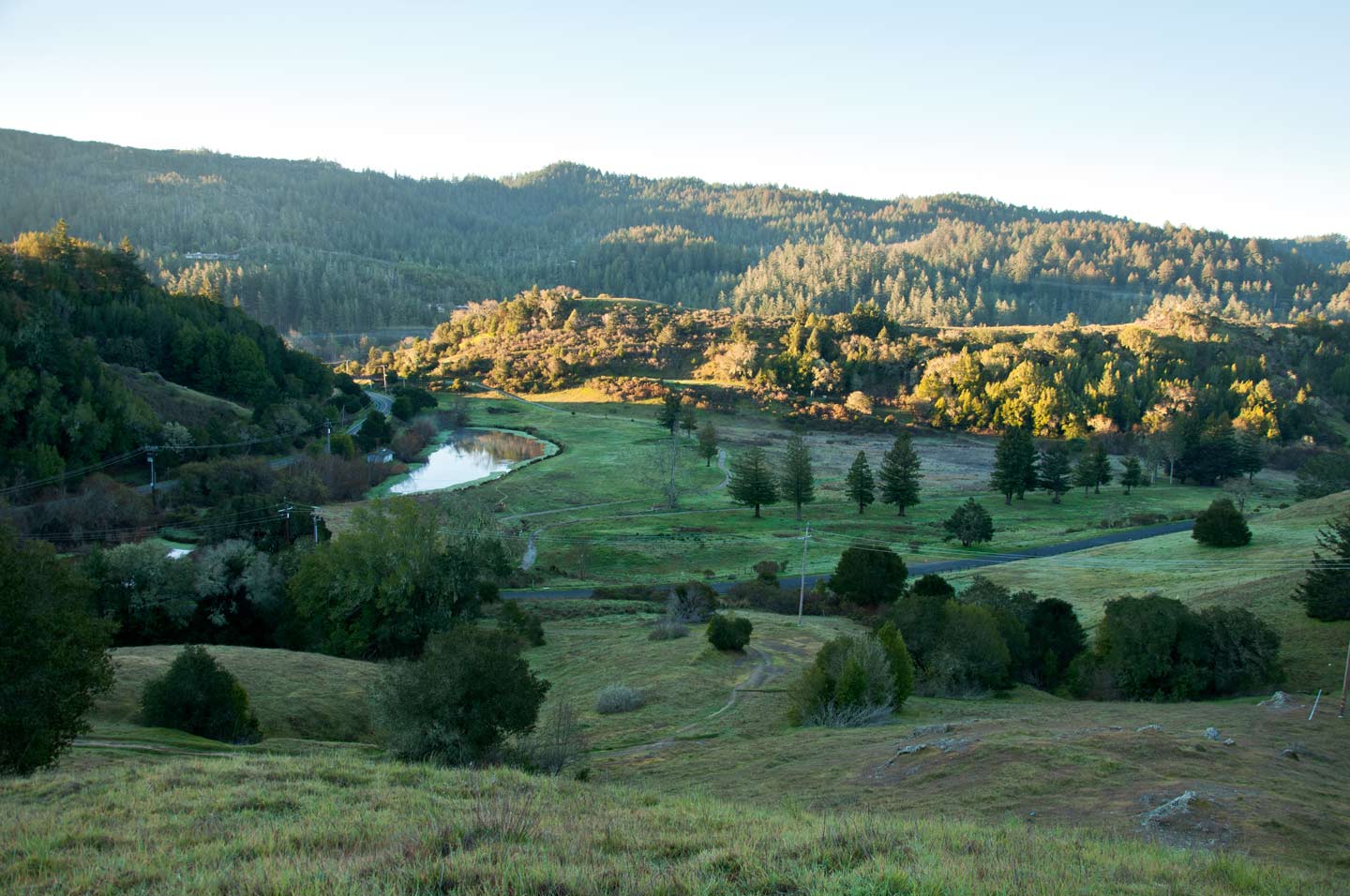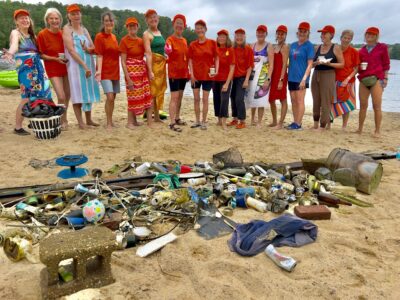Golf courses have an interesting relationship with the changing climate. Maintaining greens and fairways requires a lot of water and energy consumption. However, golf participation is declining, meaning more public courses are losing money and selling the land. San Geronimo Commons is one such site that has transformed into a nature preserve.
The Marin County, CA, course suffered financial trouble in 2017 and ultimately shut down. Initially, real estate developers wanted to use the empty land for suburban housing, a common trend with other closed public properties.
However, the development never came to be, paving the way for the nature preserve designed to increase climate resiliency and restore endangered coho salmon populations. Now known as San Geronimo Commons, the course is returning to its natural state as native grass and brush take over the land.
Trust for Public Land (TPL) purchased San Geronimo for just $8.85 million. The land is undergoing a long-term nature restoration and rewilding project to allow native plant and animal species to flourish again.
In December 2022, the Marin County Board of Supervisors entered into an agreement with the nonprofit for an exclusive right to purchase the property. The county will hold an environmental review and explore potential future uses of the property, including a fire station and facility.
“This is the right way forward for Marin County,” said Dennis Rodoni, Marin County supervisor. “Acquiring the San Geronimo Commons is an exciting, once-in-a-generation opportunity to expand conservation, community health, and fire safety benefits for all Marin County residents.
TPL’s current plans include uncovering buried creeks to allow the flowing water to foster greater coho salmon populations. The greens and fairways will be converted into hiking and biking trails for patrons to enjoy leisurely.
“It’s a once-in-a-lifetime opportunity to recreate the historic floodplain and reconnect the creeks in a way that creates a far more climate-resilient ecosystem in this area,” said Christy Fischer, TPL’s Northern California coastal conservation director.
While the rewilding process allows nature to overtake the greens and fairways, the entire project is complicated. There are still many components of the golf course that will take several engineering feats to remove, such as irrigation pipes, electrical conduits, and drainage systems underneath the land.
A dam was deconstructed to increase creek flow, expanding breeding grounds for the salmon. Other animals, like birds, are returning to the preserve for nesting.
The nonprofit is planting more trees and replacing invasive plant species with native ones.
Wildlife safety is also a big priority in TPL’s plan. In coordination with the Marin County Fire Department, brush and grass will be managed to mitigate the risk of fires, a problem that has ravaged California recently. Certain vegetation lengths will be enforced, and easy access for firefighters will be marked in the preserves. The floodplain restoration will make the land wetter and less susceptible to wildfire.
“By bringing back the floodplain and restoring wetlands, we’re allowing the land to retain moisture and become more resilient to wildfire and other climate impacts,” said Erica Williams, TPL’s San Geronimo Commons project coordinator.
Links repurposing is happening all over California and the rest of the U.S. In Los Angeles County, architects drew up plans to replace an underused municipal course with affordable housing. This effort would help the housing crisis in the metropolitan area. A 15,000-acre affordable housing project could help more than 60,000 people experiencing homelessness.
Denver, Kansas City, and northern New Jersey have been touted as other locations where golfing has dwindled, and county governments are considering closed sites for affordable housing developments. However, municipal course conversions face pushback from golfers who can’t afford to play at higher-end country clubs.
Yet, others find the amount of underutilized property a problem. “It’s just such a huge use of land that I find it’s pretty inexcusable in dense urban areas,” said Daniel Durham, a designer at the Santa Monica-based Koning Eizenberg Architecture firm.





